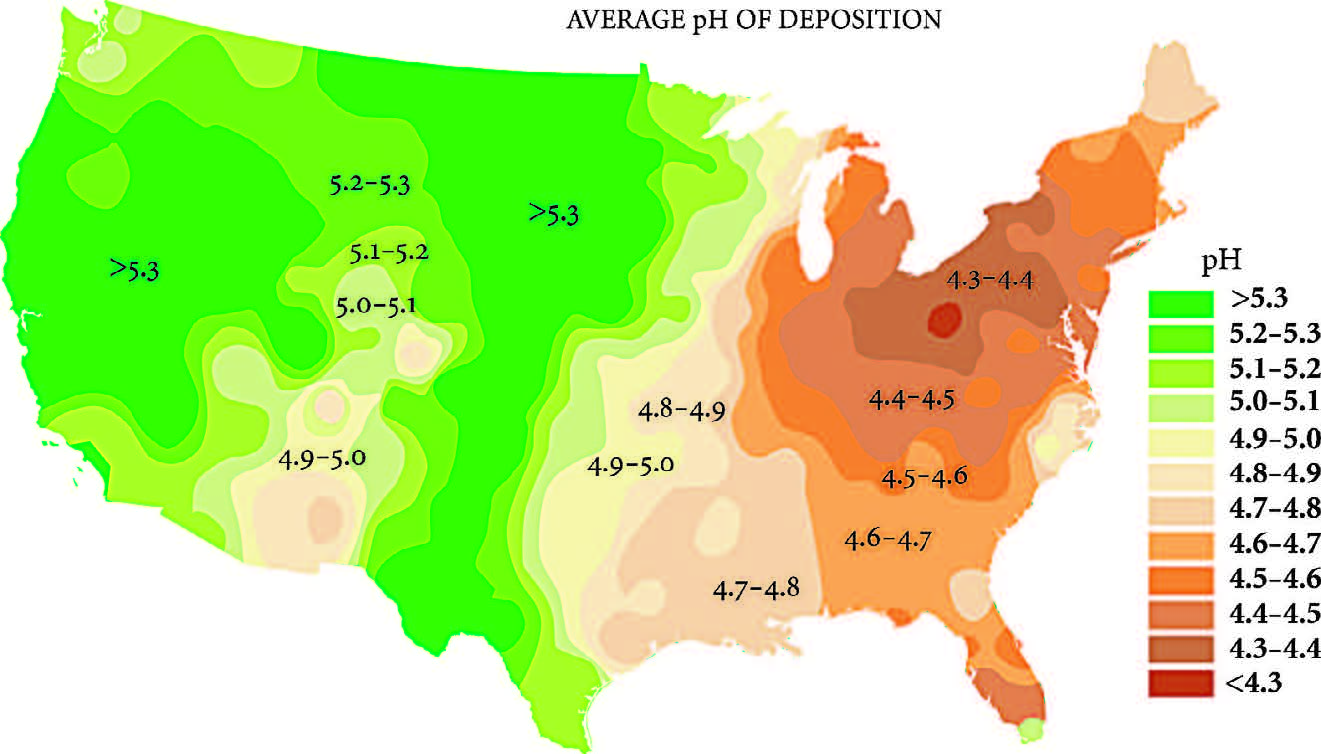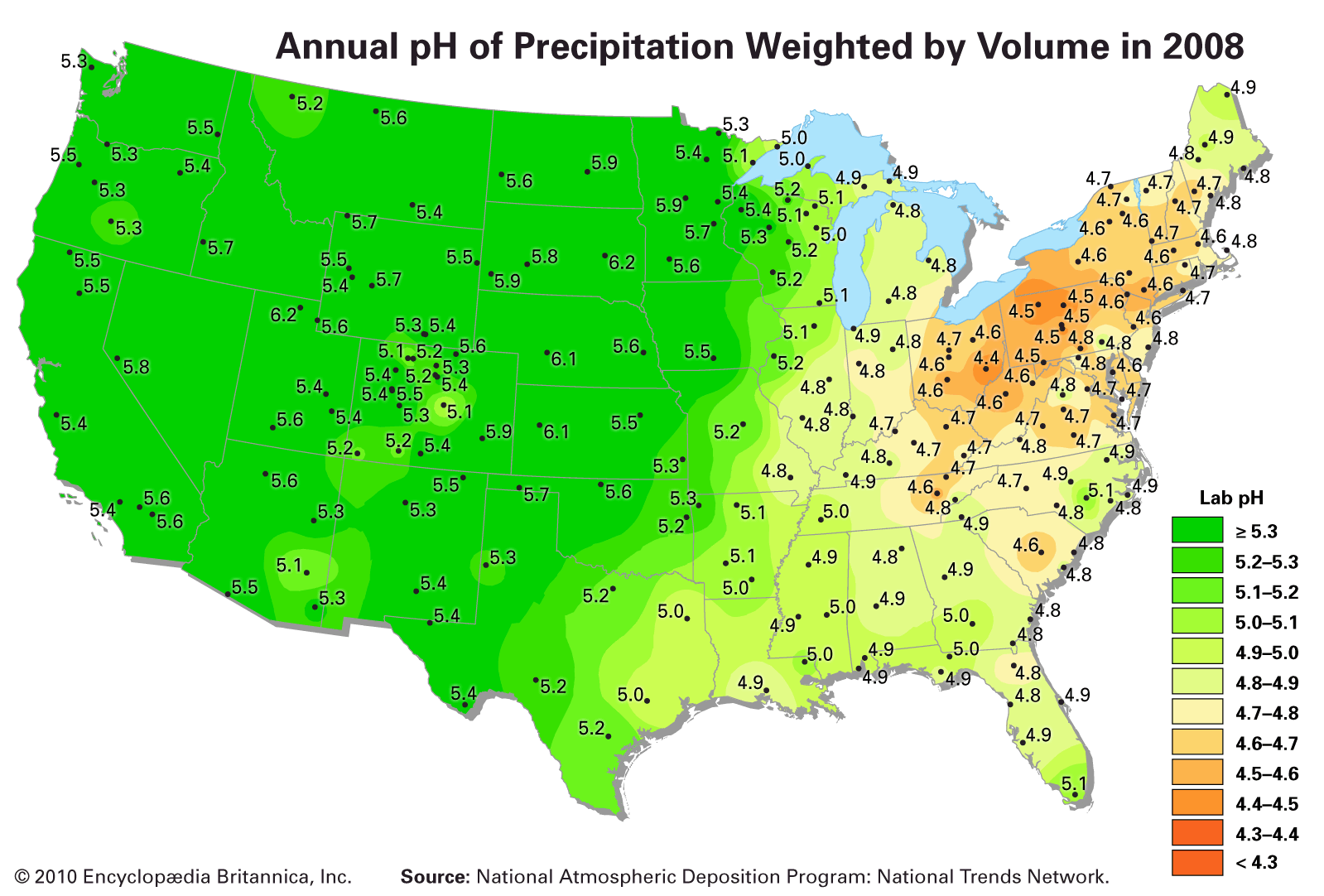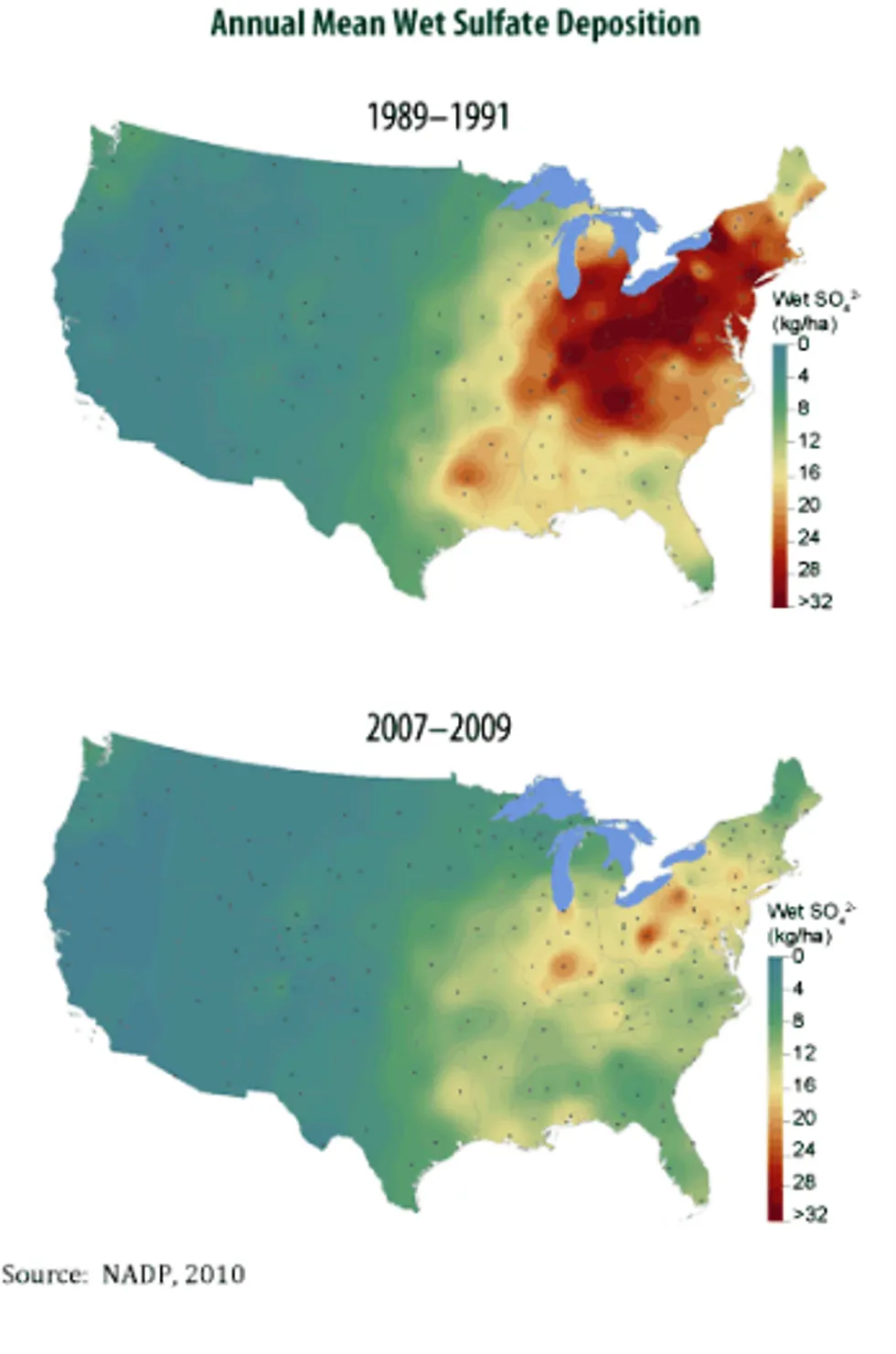The TL;DR of Acid Rain.
- If you’re in the North Eastern United States, acid rain COULD just possibly be a “thing”.
- The active ingredients in Acid Rain are Sulfuric Acid and Nitric Oxides / Acids. These are caustic compounds
- Acid rain is about 4.5 to 5.0 pH
- But normal rain is about 5.0 to 6.0
- If your town gets a LOT of settled-out pollution and RARE rain, then the “runoff” will be WORSE than if you have a LOT of rain on the same amount of settled out pollution.
- The reason that Western States have “worse” acid rain is because Las Vegas makes a LOT of pollution which piles up pretty deep before the next, rare rain. Then, you get that sulfuric acid runoff “all at once”.
- Acid Rain is much better now than it was twenty years ago.
- If “Acid Rain” killed your fish it would be because acidic runoff entered the pond ALL AT ONE TIME (after a drought) or if the pond had no BUFFERING CAPACITY. The PH would test “crashed” with the dead fish.
I encountered this online, and I wanted to just kinda go through it and straighten out this issue. I worked a REAL case of Acid Rain in New Jersey and it’s a “thing” but it doesn’t really have to be. And it kills way fewer fish than you’d think.
“….we have had torrential storms over the last few weeks, and I have had fish die in many ponds, and every pond that I tested has high ph. and I am concerned that we had a major acid rain that caused the issues.”
This map shows where in the United States we see acid rain the most. It’s not everywhere. And really it’s a two point difference from regular rain, one of the BIG PROBLEMS is the elements in it, sulfuric acid and nitric acids.

This map shows something interesting to me. Did you know that “rain” all by itself has a low pH? Look at this map that suggests that rain is below 6.0 across most of it’s range in the United States. It makes sense that ANYWHERE in the US that you are, a good long rain could take a FEEBLE carbonate system (weak PH) and drop it pretty hard. Anywhere. (But the key to that is water that is FEEBLE and NOT BUFFERED)

This article is among MANY I looked at to “summarize” about Acid Rain. There’s nothing written by EPA or USFWS on “Acid Rain in Residential Ponds” but it’s not hard to put together from one of these synopses:
In the first place, the United States Acid Rain issue is better than it was. It’s still a “thing” for sure but it’s not like it was in the seventies, eighties and nineties.

ADDITIONAL ACID RAIN RESOURCES:
Five more articles. These would not be here if I did not find something unique and useful in each one.






